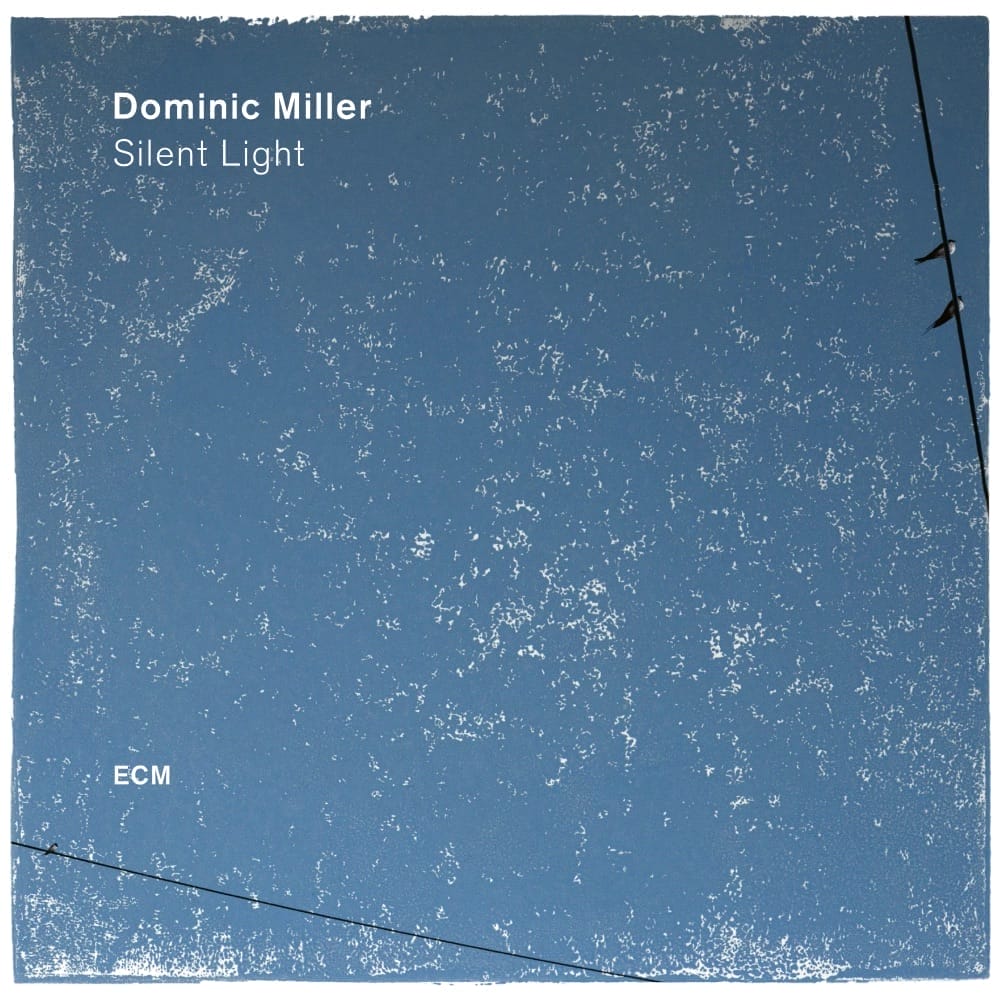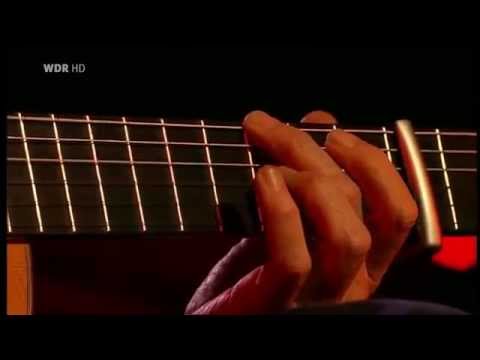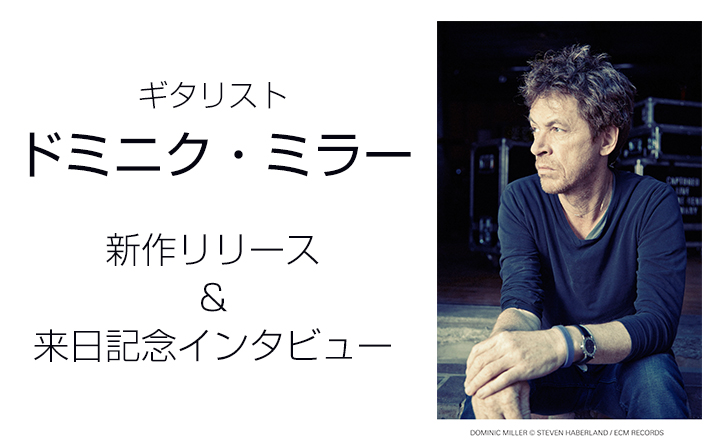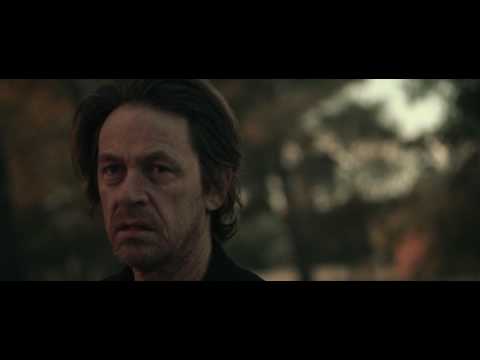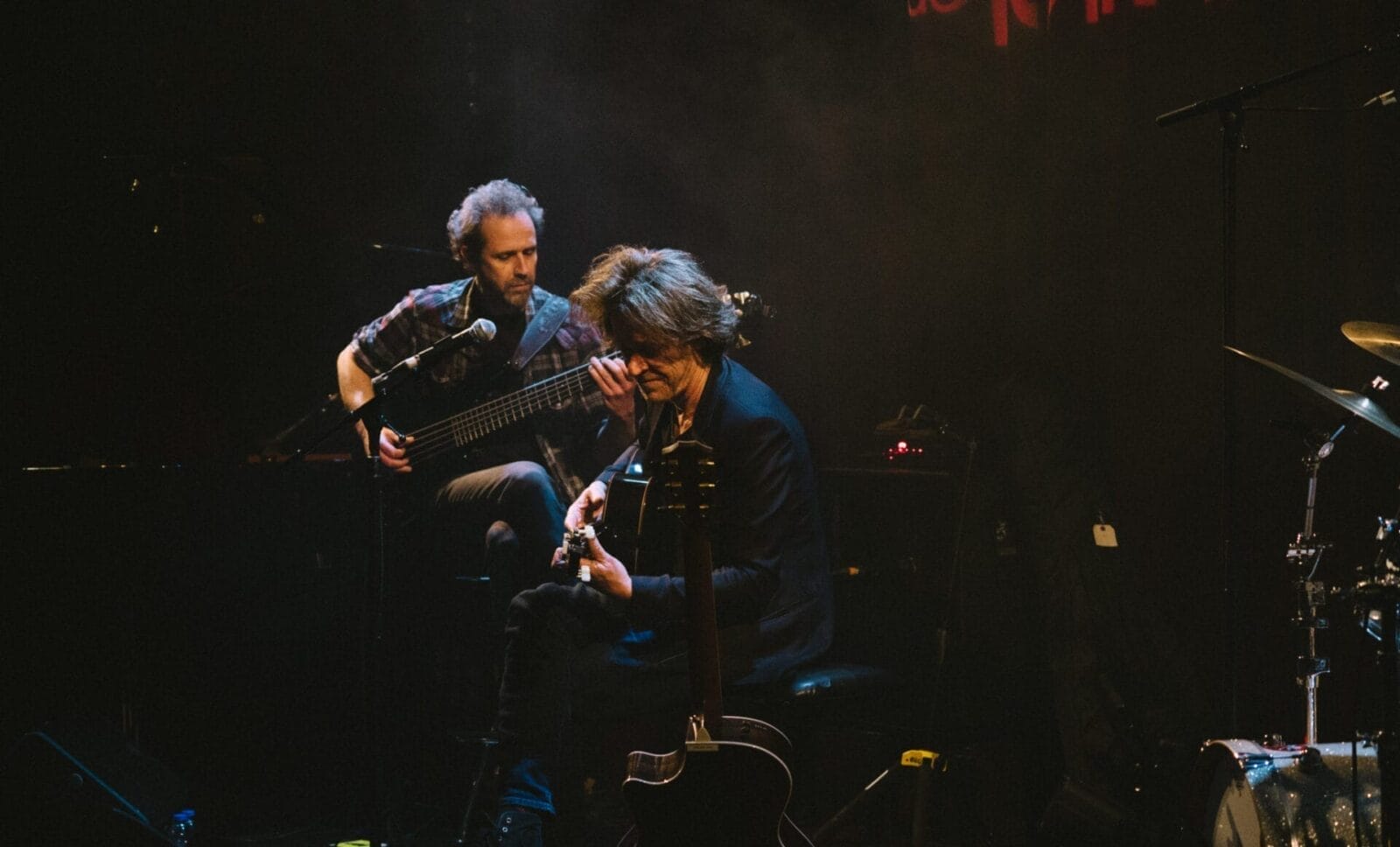ECMへの移籍
さあ、2017年リリースのドミニクのECM移籍後の1枚目のソロアルバム『Silent Light』です。この作品はドミニクが初めて自分のソロ作品をセルフプロデュースではなく、他人による全面的なプロデュースによって制作したアルバムです。
まずやはりこのドミニクの移籍は世界的にも結構な驚きだったのではないでしょうか。というか、ドミニク本人も驚いたようです。私は最初、この移籍はドミニク方からECMの方に頑張って交渉したものだと思っていたのですが、違いました。
この移籍のきっかけは2015年8月、ドミニクが既にバカンスに入っていた時に、ECM側から「マンフレート・アイヒャー(ECMレーベルの創設者兼オーナー兼プロデューサー)がドミニクに会いたいと言ってる」と言ってきたので、慌ててバカンスを切り上げてECMのあるミュンヘンに行った事が始まりのようです。
ドミニクはその時の事を「驚いた。もちろん自分はアイヒャーは知っていたけど、まさか向こうが自分のことを把握しているとは思わなかった」と述べています。
まあ、私も最初は少し驚きはしたんですが、その後よく考えたらこの移籍に関してはかなり納得をしました。やはりドミニクの音楽の空間を重視する音楽性、彼が影響を受けてきた南米のフォークロアと言った要素はアイヒャーの興味を引くには十分な理由じゃないかな、と思いました。というより、はっきり言えばドミニク・ミラーという音楽家の中にはもう世界中のあらゆる音楽の要素が詰まっている、と考えていいので、アイヒャーのような人にしたらドミニクは「とても面白そうな人物」と映って当然だと思いました。
それはこのECMの、マンフレート・アイヒャーという人物自身が、ちょっと普通の人では思いつかないような意外性のあるミュージシャンを組み合わせて作品を作ったりしてきた人であり、実際に現在ECMレーベルに所属するアーティストも本当にさまざまなジャンルにわたっているからです。
実際に、2014年11月にECMからリリースされたヒリアード・アンサンブルのテノール歌手、ジョン・ポッターの「Amores Pasados」というアルバムに、スティングが参加しています。このアルバムには他にも私の大好きなレッド・ツェッペリンのベーシスト、ジョン・ポール・ジョーンズやジェネシスのキーボーディスト、トニー・バンクスも参加しています。JAZZレーベルでありながら、このミュージシャン選択の柔軟性には驚くとしか言いようがありません。そしてこの時にスティングを起用しているわけですから、その時点でECMがドミニクの事を把握していても全く不思議ではないでしょう。
ECMというJAZZレーベルは「沈黙の次に美しい音」というコンセプトを掲げるだけあって、本当に美しい音で録音をするレーベルです。それはもう特徴的なリバーブのかかった音ですが、それは基本的に「ヨーロッパの教会で音楽を聴いている」イメージで作っているそうです。そして、レーベルが市場として狙っているのは「ヨーロッパに住むクラシック音楽を普段聴いている人」で、その人たちにもっとJAZZを聴かせたい、というコンセプトがあるそうです。
このアイヒャーの「狙い」は本当に的確ですね。だってヨーロッパではないけど、私のように日本でクラシックにずっと親しんできた人がやはりECMの作品を愛聴しているわけですから。私のような人間にはJAZZといってもアメリカのものよりもヨーロッパのものに惹かれますが、それはやはりクラシックの影響がヨーロッパの方がより顕著だからでしょう。そして、ヨーロッパ以外ではマンフレート・アイヒャーは日本はマーケットとして非常に重要視しているそうです。この事は2023年4月に私は日本のECMマネジャーである、稲岡邦彌(Kenny INAOKA)さんから聞いた話なので本当です。
とにかくこういったレーベル自身の音楽哲学だけとっても、ECMはドミニク・ミラーという音楽家には世界で最も「相性のいい」レーベルだと私は思っていますし、ドミニクの美しい音や、彼が非常に大切にしてきた音楽においての空間や間に関する考え方を、最大限に活かして魅力を引き出してくれるのは、ECMしかないと現在も思っています。だからこの彼の移籍は本当に嬉しかったです。
非常に前置きが長くなりました。ECMのやり方やこのアルバム制作時の背景については、ドミニクが語ったドイツでのインタビューがあります。それは別に投稿してありますので、ぜひ読んでください。(Crick)
録音と当初の計画
作品の話に戻ります。
この作品は、2016年3月にECMのメインスタジオである、オスロのレインボー・スタジオでわずか2日間で録音されました。この録音にかけられる日数の少なさに、ドミニクのマネージャーも驚いてドミニクに「大丈夫か?」と念を押して確認したみたいですね。
しかしこの録音時間の短さも、ECMレーベル特有のやり方です。ですからこれは別にドミニクだけがそうなのではありません。それには色んな要因があるようですが、コスト的にもそれ以上かけるとペイしない、という事情もあるようです。ですからECMの看板アーティストであったパット・メセニーがECMを去ったのも、自分がやりたい事をその短い録音期間では実現できない、という事が原因の一つだったようです。
ただこれは私の個人的な意見ですが、ドミニクが大事にしたい音楽性を考えた時、短い時間の中で集中して、音楽の瞬発力とその時の演奏を出来るだけそのまま活かすこのやり方は彼には合っているように感じます。彼の音楽はあまり作り込みすぎない方がいいように感じるからです。ドミニクの音楽は緻密に計画通りにきちんきちんと作り込みすぎない方が彼の音楽の純粋な本質的な要素がそのまま残るような気がします。
しかしまあ、その短い録音期間の中で行われたこのECMの独特の音は、もちろん人によって好き嫌いはあるでしょう。ですがドミニクの生音をこれだけそのまま美しく録音してくれるのは、ファンとしては本当に嬉しい限りです。
ただ実は録音時にちょっとしたトラブルがありました。ドミニクが先にオスロに送っておいたギターが税関のトラブルの為にスタジオに届かなかったんです。その話と、あとECMの優秀なエンジニア達の事については、また後日投稿します。
最初、このアルバムは全く別のコンセプトで進んでいましたが、ドミニクが揃えたいと考えていたメンバーがどうしても日程的に調整がつかなかった為、思い切ってそのアイデアを変更してソロでやる事に決めたそうです。
この最初の構想は、ドミニク自身が書いたライナーノーツによると「大きな影響を受けて来た2 枚のECM アルバム、エグベルト・ジスモンチの『Solo』と、パット・メセニーの『Offramp』を取り上げ、それらのアルバムが交差するところに位置するようなアルバム」だったそうです。だから初めはこの作品とは全く違う事を計画していたって事ですね。そしてライナーでドミニクがこのアルバム録音直前に亡くなった、と話しているナナ・ヴァスコンセロスというブラジルのパーカッショニストがメセニーとジスモンチの「共通項」になります。
まずドミニクにとってパット・メセニーという人はギター・ヒーローの代表の一人でしょう。
ライナーノーツには、”メセニーの『Offramp』”とありますが、これは正確には1982年のパット・メセニー・グループの作品です。この作品は数々の賞を総なめにし、当時の音楽界に新しい風を吹き込んだ彼らの代表作ですね。この『Offramp』については日本でも私よりもずっと詳しい方は沢山いらっしゃると思うので、あまり詳しくは述べません。というより、申し訳ないのですが私はあまりパット・メセニーに詳しいとは言えないので、ドミニクの音楽に具体的にどのようにメセニーの影響が出ているか、などを私はちゃんと指摘できないんです。
私は初期のECM時代のパット・メセニー・グループは好きです。厳密には『First Circle』(1984)くらいまで。しかし私はパット・メセニーのギターソロ名義の作品は数枚しか聞いていないんです。理由は実は私はメセニーのギターの音、特にギター・シンセの音が少し苦手です。私はどちらかというとあのグループの「頭脳」である、ピアノの故ライル・メイズが好きでした。でも、これからはもう少し勉強したほうがいいと思うので、メセニーの演奏もじっくり聴いてみようと思います。幸い、メセニーは来年早々、凄い回数の公演を日本で行うので、見に行ってきます。
一方のジスモンチですが、日本では相当音楽好きかECMファンなら知ってるでしょうが、そうでなければあまり一般的ではないかもしれないですね。でも彼は正真正銘の「天才」でしょう。ギターとピアノの両方があそこまで演奏できて、なおかつ作曲家としてもあれほど才能と幅広い音楽性があるんですから、完全に「天才」だとしか言えないです。もしここを読んでいてジスモンチ知らないよって人がいたらとにかくまず聴いてみてほしいです。凄いです。ジスモンチはブラジルの人ですからブラジル音楽の部分もあるし、だけどクラシックもヨーロッパでしっかり学んでいる人なので、それこそピアノソロではキース・ジャレットに通じる世界もあれば、シンセサイザー使った壮大なスケールのプログレ的な曲もあります。面白いのでお勧めします。
個人的にこの2者の音楽的な共通点として感じるのは「非常に生命感に溢れる音楽」という事でしょうか。また、この2人とドミニクとの共通性としては、「ブラジル的」な部分になるのかな、と思います。勿論メセニーにはアメリカ的なものやアコースティックな部分からもドミニクは影響を受けていると思いますが、しかしメセニーもブラジル音楽から影響を受けている。ジスモンチに関しては彼の特にブーランジェから学んだフランスのクラシック音楽の部分にドミニクは影響を受けているとは思いますが、3人の共通項は「ブラジル音楽」なのかもしれません。
この実現できなかった幻の構想、いつか聴いてみたい気がします。
曲について
結局ドミニクはとにかく自分だけで初心に立ち返って、自分自身の音楽のありのままの姿を純粋な形で正直に出そう、という思いでこのアルバムを制作したようです。しかし、ソロとは言え、音楽的な配慮から旧友である、マイルス・ボウルドがパーカッションで参加しています。
このアルバムの曲解説に関しては、ドミニク自身がライナー・ノーツで詳細に述べているので、それは下の『Dominic’s Commnets』をご覧ください。
しかし私の方で少しだけ曲の解説を付け加えます。この録音は日程が決まってからすぐに行われたようで、ドミニクは時間的にこのアルバム為に多くの曲を用意する事ができず、以前の彼の作品が多く収録されています。
まず1曲目の「What You Didn’t Say」から思わず息を呑むほどの美しさが静寂と間の中に感じられます。その録音時のスタジオの雰囲気、ドミニクの指遣い、息遣いまで感じられる。このアルバムの中にはドミニクのそれまでのソロアルバムに収録された曲が数曲あります。(Track 2、4、6、8、9)しかしどの曲も、別に昔の作品の録音が悪かったわけでは決してないのですが、比べて聴いてみるとこの作品でのECMの録音の音の美しさに圧倒されます。音のひとつひとつがちゃんと粒だっていて輝いて流れるように生きた音となっており、それによって曲に命が吹き込まれていると感じます。
実際の録音もライブ演奏そのままです。オーバーダブがしてあるのは「Chaos Theory」(Track 7)にドミニクのベースが入ってるだけです。
2曲目の「Urban Waltz」は『First Touch (20th Anniversary Edition)』のボーナストラックとして始めは収録されています。この曲についてはドミニクは「アントニオ・ラウロの流れを汲む私なりのヴェネズエラン・スタイルのワルツだ。」と語っています。この「アントニオ・ラウロのヴェネズエラ風・ワルツ」をドミニクがスティングを演奏している音源がYouTubeにあるので、是非聴いてみて下さい。私は結構この曲は好きです。「Baden」はドミニクが敬愛するバーデン・パウエルに捧げた曲で、アルバム『Third World』に、「Angel」は『5th House』に収録されていた曲です。
また、アルバム全体を通して1曲だけ他の人の作曲した作品が入っています。「Fields Of Gold」(トラック 8)です。改めて言うまでもなく、これはスティングの作った有名な作品です。 なぜ他の人の作品を 1 曲だけ含めたのでしょうか? なんで自分とスティングで作った「シェイプ・オブ・マイ・ハート」を収録しなかったのか?という質問にドミニクは次のように答えました。
「彼への感謝の気持ちを込めてレコーディングしたんだ。彼の曲で、とても気に入っているから。また、この曲は個人的な彼への隠れたメッセージであり、私の音楽的な旅の一部であるため、私のアルバムの物語によく合っている。」
アルバムコンセプト
ドミニクはアルバム制作にあたっては明確にコンセプトを決め、それにそって曲を書きます。その「コンセプト」さえ明確になれば、後は結構楽な作業だ、と言ってるくらいです。
このアルバムのコンセプトは、「音楽の中にある、音の存在しない空間の部分に対してリスナーが自分自身の想像力を膨らませ、積極的に作品世界に参加してきてほしい」という考えです。音の無い空間の中で、演奏者である自分と、リスナーとの間で双方向(インタラクティブ)のコミュニケーションを図りたい、という事ですね。
ドミニクはこのように語っていました。
「会話と会話の合間にあるふとした沈黙。その時の方がより雄弁に”真実”を語っている事がある。」 これを表現したのが1曲目の「What You Didn’t Say」(あなたが言わなかった事)です。
このコンセプトについては、ドミニクがメキシコの映画監督カルロス・レイダガスの映画『Silent Light』(2007)を見て大きな衝撃を受けた事がアルバムにに反映されています。ですからアルバムタイトルもこの映画から取られてます。この事をドミニクが語っているインタビューを引用しましょう。
「これはカルロス・レイガダスの長編映画の名前です。 彼は一種のデザイナーであり、空間に関する仕事をよく行っています。このアルバムのことを考えていたときにこの映画を見れたことが信じられない。セリフのないシーンもたくさんあります。 誰もが言いたいことがあって、フェイクニュースやナンセンスが溢れているこの時代に、誰かがそのような映画を作るなんて信じられない。 映画を見た時、トランプは名を上げていました。
真実とはしばしば現実には無であり、空虚である、そこに真実がある。私は光と静寂が好きです。芸術が好きだ。アートは私にインスピレーションを与えてくれる。セザンヌやモネ、その他の画家たちがそこを旅したのも不思議ではない。このアルバムも静寂の中で書いた。メロディーを見つける前にコンセプトが必要だった。それには時間がかかった。」
https://www.dw.com/de/dominic-miller-ich-kann-harmonisch-protestieren/a-38513240
音楽においての「空間の重要性」
音楽においての「空間の重要性」。これに関しては日本ではあまり言及される事は少ないですが、私は個人的にドミニクが1988年、彼の音楽キャリアのかなり初期の頃に出会った故マーク・ホリス(UKバンド:Talk Talkのリーダー)の影響は大きかったはずだと考えています。彼が参加したアルバム「Mark Hollis」は当時のロンドンの音楽シーンにおいては、かなり勇気のいる画期的な作品だったと思うので、この作品については後日このサイトで取り上げます。
この音楽においての「空間」のコンセプトと「色彩のコントラスト」という考え方は、今のドミニクの音楽にとっては非常に重要な点です。
また、私がドミニクがECMに移籍して本当に良かったな、と思うのは「録音の音の良さ」もありますが、この2つの彼が重要だと思っている部分を恐らく最も理解して活かしてくれるレーベルだと思うからです。
音楽の中の沈黙の空間によって演奏者と聴き手が双方向のコミュニケーションを成立させ、演奏者が多くを語らなくても、聴き手が想像や感情を喚起する事が可能な余地を多く残すこと。このドミニクの表現のコンセプトは、これはおそらくこれは私たち日本人が思っている以上に西洋文化圏の人にとっては勇気がいることだと思います。だからちょっと長くなりますが、何故これが「勇気のいる表現なのか」をこれから説明します。
ドミニクは2017年に日本に来た時、大阪のFMラジオに出演して次のような事を語っていました。
「演奏している時、日本は世界のどの国よりも、音のない時でもどんな小さな音でも音楽に耳を傾けてくれる国だと感じる。そういう国があると、自分がこういった沈黙や空間の多い音楽を”やってもいいんだ”」という気持ちになる」と。
まあ、これがもし本当にドミニクの実感だとしたら、私は非常にこれは日本文化と芸術の特性上、納得できる気がしたんです。だからこれに関して私はドイツにドミニクに会いに行った時に渡した手紙に「なぜ日本人はあなたの音楽をちゃんと聞こうとするのか」という文化的な理由を説明しました。
そして後日、私が受け取ったドミニクからのメッセージを読む限り、彼はその説明を理解し、日本的な「美学」に対しても理解してくれたようです。
日本人の皆さんも、日本のデザインは結構シンプルで非常に空間を多く残したデザインの物が多いと気づいているのではないでしょうか?
まず、「多くを語らずとも聴き手にさまざまな想像や感情を呼び起こす為のスペースを残す」、というドミニクのコンセプトですが、これは日本の芸術表現に非常に色濃く残っている「余白の美」や「不足の美」と呼ばれる概念にかなり近い。
まず、空間を作り出し、鑑賞者の想像の余地を残すという表現方法は、日本の芸術表現に深く根ざした方法です。この表現の概念は、日本人がほとんど無意識のうちに持っている感覚、DNAのように代々受け継がれてきたものとも言えます。日本は禅から派生した文化が無意識的に全てに反映されているといってもいいので、創作上の概念はここからスタートする事が多い。
簡単に言うと、伝統的な日本画には何も描かれていない「白い部分(余白)」が多く存在します。 これらの空白スペースは未完成だと言う事を意味していません。 この空白スペースによって、描かれたシーンの空間的な奥行きや雰囲気を強調させたり、全く描かれていない別のイメージを想起させる事を期待しています。実際には描かれていない多くの背景や情報を、この余白の部分を作ることによって、鑑賞する側に想像させ、その鑑賞者のイメージを加える事によって絵の全体像を完成させようとする狙いがあります。ですから日本画家は意図的にその為の空間と余白を残します。
また、日本人の「音楽を真剣に聴く」という行為は、日本人は子供の頃から「相手の話をよく聞きなさい。その上で自分の考えを述べなさい」と教育される事が大きいと思います。だから相手が何を言いたいのか、何を表現したいのか、何を考えているのかということをまず最初に理解しようとします。日本人は相手の立場をできるだけ尊重しようとする姿勢が基本的にある。そして、それは相手の「肌の色」がどうであろうと基本的に変わりません。
このような表現方法が可能なのは、日本が人口の85%以上が同じ民族である単一民族国家であり、建国以来数千年にわたって言語と文化が続いてきた文化的背景があるからです。従って、日本人同士なら、お互いに詳細な説明をしなくても共通認識を得ることは比較的容易です。
しかし西洋文化圏では、今述べたことは簡単ではありません。 なぜなら、同じ国でも文化的背景や言語が異なる人がたくさんいるので、詳しく具体的に説明しないと、自分の考えを相手に「正しく」伝えることは難しいからです。だから表現方法はどちらかと言うと加えていったり重ねていく方向性に向かいます。音楽だってクラシック音楽は基本重ねる表現方法ですし、西洋の絵画は基本的にキャンバスの隅々まで塗られるように表現されます。インテリアデザインにおいてはそれぞれのアイテムは日本人からはちょっと思いつきもしないような反対の要素を持つような物をたくさん配置しますが、全体としては調和のとれた構成としてまとめる。
逆に、日本人は様々な要素を取り入れ、それらを重ね合わせ、それらを一つのまとまりに統合するという西洋的なアプローチがとても苦手です。この「足し算」の方向への傾向は、日本人の思考にとって自然なものではありません。その結果、日本人はさまざまな芸術やデザインにおいてシンプルさを重視し、要素を最小限に抑える「引き算」の発想をする傾向があります。これは私が長年にわたって個人的に経験してきた実感です。
従って、基本的に「足し算」である西洋文化圏に属するドミニクが追求したい表現方法は、私たち日本人が思っている以上にずっと挑戦的で、アーティストとしては勇気を試されるものだと思います。
無音の空間を多く取りながら、最小限の音で様々な感情や表現を伝えることは、音楽や表現、コンセプトが明確で強いものでなければ非常に困難です。とても曲の構造やメロディが強くなければ難しい。 だからドミニクのこの音楽のコンセプトは非常に挑戦的な創作活動であり、多くの勇気と努力を必要とすると思います。 だからこそ私は彼を応援したいと思っています。
最後に、2017 年にドミニクが日本で受けた彼の音楽背景がわかりやすいインタビューがありますので、それを紹介いたします。
インタビュアーは「Jazz The New Chapter」でお馴染みの柳樂光隆さん(@Elis_ragiNa)さんです。
Transfer to ECM
“Silent Light”(2017) was the first album to be released on ECM following his move to the label. It was also the first solo album that Dominic had produced entirely by others, rather than producing himself.
Dominic’s move to ECM must have come as quite a surprise to the public? Apparently, this surprised even Dominic himself.
At first I thought Dominic had negotiated a transfer with ECM, but that was not the case. The transfer started in August 2015 when ECM contacted Dominic’s manager and told him that Manfred Eicher (founder, owner and producer of the ECM label) wanted to meet Dominic. Dominic was on summer holiday, but he cut his holiday short and travelled to ECM’s headquarters in Munich.
Dominic said about the meeting: “Of course I knew who Eicher was, but I didn’t think he recognised me.”
Well, I was a bit surprised at first, but then I thought about it and I was pretty convinced about the move. I thought that Dominic’s emphasis on musical space and his South American folklore influences were reason enough for Eicher to be interested. Frankly, Dominic Miller as a musician has so many elements of music from all over the world that no other musician can match. So I think it’s only natural that in the eyes of someone like Eicher, Dominic seemed to be a “very interesting musician”.
In fact, Manfred Eicher’s work combines unexpected musicians that ordinary people would never have thought of. The ECM label is the prestigious “jazz” label, but it has musicians from a wide range of genres who are not bound by its boundaries.
Sting was a guest on Hilliard Ensemble tenor singer John Potter‘s album “Amores Pasados”, released on ECM in November 2014. The album also featured my favourite Led Zeppelin bassist John Paul Jones and Genesis keyboardist Tony Banks. It really amazes me that jazz labels are so flexible in their choice of musicians. So it is no surprise that ECM, who had already signed Sting, knew about Dominic.
The jazz label ECM, whose motto is “The Most Beautiful Sound Next To Silence”, lives up to its name by producing recordings of exceptional sound quality. The distinctive reverberant sound is intended to evoke the image of “listening to music in a European church”. The label’s main target audience is people who regularly listen to classical music in Europe, and ECM aims to introduce them to jazz and encourage them to listen more.
This Eicher’s “target” is very accurate. Although not in Europe, people like me who are familiar with classical music in Japan listen to ECM’s work. People like me are more attracted to European jazz than American jazz, probably because the influence of classical music is more pronounced. I also heard that outside Europe, Manfred Eicher considers Japan to be a very important market. This is true, because I heard it directly from Kenny Inaoka, ECM’s manager for Japan, in April 2023.
In any case, given the musical philosophy of the label, I think ECM is the best place in the world for a musician like Dominic Miller. I think ECM is the only label that can make the most of Dominic’s exquisite sound and his deep idea of space and pause in music, and maximise the appeal of his music. So I was really happy about his transfer.
The introduction was quite long… Here’s an interview conducted in Germany in which Dominic talks about ECM’s musical approach and the background to the creation of this album. This is a separate article, so please read it.(Click)
Recording and Original plans
Let’s get back to the story of the album.
The album was recorded in just two days in March 2016 at ECM’s main studio, Rainbow Studios in Oslo.
Dominic’s manager was surprised by the short recording time and initially worried: “Dom, are you sure you’re going to be okay?”
But this short recording time is characteristic of the ECM method. It is not just Dominic who is short. There may be a number of factors at play. Cost efficiency makes it difficult to spend so much time recording. Pat Metheny, once synonymous with ECM artists, also left ECM. One of the reasons was that he could not realise his creative vision in the short recording time available.
This is a personal opinion, but given the musicality that Dominic holds dear, this method of recording, which This is a personal opinion, but given the musicality that Dominic holds dear, this method of recording, the liveliness of the music and the instantaneous power of the performance, seems to suit him. Rather than spending time on strict plans and details, I feel that this ECM recording approach preserves the pure, essential elements of his music.
You may like or dislike the unique ECM sound captured during this short recording period. But for fans, it’s a pleasure to hear Dominic’s guitar sound recorded in such a beautiful way, using as much of his own sound as possible.
But there was one small problem with this recording. Dominic’s guitar had been sent to Oslo earlier, but due to customs problems it never reached the studio. I will post this story and the story of the excellent ECM engineer later.
Originally Dominic had a completely different concept for the album. This original concept was changed when the schedules of the musicians he wanted to work with to realise his idea could not be accommodated.
The original idea, according to Dominic’s own liner notes, was “two ECM albums that have always been very influential to me: Egberto Gismonti‘s “Solo” and Pat Metheny‘s “Offramp”, and saying that I’d like to make a record that’s somewhere in between those two. So in the beginning he was planning something completely different from this work. And a Brazilian percussionist named Nana Vasconselos, who Dominic mentions in the liner notes as having died shortly before the recording of this album, is the “common denominator” between Metheny and Gismonti.
First of all, Pat Metheny is probably one of Dominic’s most important guitar heroes. The liner notes refer to “Metheny’s ‘Offramp'”, which is to be precise the work of the Pat Metheny Group in 1982. This was their masterpiece, which won numerous awards and was a breath of fresh air in the music world at the time. I won’t go into too much detail about this “Offramp” as I’m sure there are many people in Japan who know much more about it than I do. Rather, I can’t say that I’m very familiar with Pat Metheny, so I can’t really point out the specific ways in which Dominic’s music is influenced by Metheny.
Let’s get back to the story about the album.
The album was recorded in just two days at ECM’s main studio, Rainbow Studios in Oslo, in March 2016.
Dominic’s manager was surprised by the short recording time and initially worried, “Dom, are you sure you’re going to be okay?”.
However, this short recording time is characteristic of the ECM method. It is not only Dominic who is short. There may be a number of factors contributing to this. Cost-effectiveness makes it difficult to spend so much time recording. Pat Metheny, once synonymous with ECM artists, also left ECM. One of the reasons for this was that he was unlikely to be able to realise his creative vision in the short recording time available.
This is a personal opinion, but given the musicality that Dominic holds dear, this recording method, which concentrates on short periods of time and exploits the immediacy of the music and performance in the moment, seems to suit him. Rather than spending time on strict plans and details, I feel that this ECM recording approach preserves the pure, essential elements of his music.
You may like or dislike the unique ECM sound captured during this short recording period. But for fans, it’s a very happy to hear Dominic’s guitar sound recorded in such a beautiful way, using as much of his own sound as possible.
But there was little problem with this recording. Dominic’s guitar had been sent to Oslo earlier, but due to customs problems it never reached the studio. I will post this story and this story of the excellent ECM engineer later.
Originally Dominic had a completely different concept for the album. This original concept was changed when the schedules of the musicians he wanted to work with to realise his idea could not be accommodated.
The initial idea, according to Dominic’s own liner notes, was ”Two ECM albums that have always been very influential to me: Egberto Gismonti’s “Solo” and Pat Metheny’s “Offramp” saying that I’d quite like to make a record that kind of meets somewhere between those two.” So in the beginning he was planning something completely different from this work. And a Brazilian percussionist called Nana Vasconselos, who Dominic mentions in the liner notes as having died shortly before the recording of this album, is the “common denominator” between Metheny and Gismonti.
First of all, Pat Metheny is probably one of the leading guitar heroes for Dominic. The liner notes refer to “Metheny’s ‘Offramp'”, which is correctly the work of the Pat Metheny Group in 1982. This was their masterpiece, which won numerous awards and was a breath of fresh air in the music world at the time.
I won’t go into too much detail about this “Offramp” as I’m sure there are many people in Japan who know much more about it than I do. Rather, I can’t say that I’m very familiar with Pat Metheny, so I can’t really point out the specific ways in which Dominic’s music is influenced by Metheny.
I like the Pat Metheny Group from the early ECM days. To be precise, up to “First Circle” (1984). However, I have only listened to a few of Pat Metheny’s solo albums. The reason is that I don’t like Metheny’s guitar sound, especially the guitar/synth sound. I preferred the late pianist Lyle Mays, who was the brains of the group. But from now on I think it’s better to study a bit more, so I’m going to listen to Metheny’s performance carefully. Fortunately, Metheny will be performing a lot in Japan early 2024, so I’ll be going to see him.
I like the Pat Metheny Group from the early ECM era. Strictly speaking, up to about ”First Circle”(1984). Furthermore, I have rarely heard
On the other hand, Gismonti is probably not very well known in Japan, unless you are a serious music lover or an ECM fan. But he really is a ‘genius’. He plays guitar and piano very well, is a talented composer and has a wide range of musicality, so he is a complete ‘genius’.
If anyone reading this site has never heard of Gismonti, just give him a listen. It’s amazing. Gismonti is Brazilian, so there are parts of Brazilian music, but he also studied classical music in Europe, so some of his solo piano work has a Keith Jarrett feel to it, and some of his work is like progressive rock on a grand scale with synthesizers. It’s very interesting and I recommend it.
What I personally feel the two have in common musically is that it is “very life-like music”. And also I think the similarity between the two of them and Dominic is that they have a lot of ‘Brazilianness’ in common. Of course, I think Dominic is also influenced by the American and acoustic aspects of Metheny. But Metheny is also influenced by Brazilian music. As for Gismonti, I think Dominic is influenced by the French classical part of him, especially the part he learned from Boulanger, but maybe the common denominator of the three of them is “Brazilian music”.
But I feel that one day I would like to hear the music of this illusory concept that was never realised.
About the Songs
Anyway, he made the bold decision to change his idea and do the album as a solo project. It was a return to basics, a return to his roots and an honest and authentic expression of his music in its purest form. Although it is a solo effort, his long-time friend Miles Bould joins him on percussion, due to musical considerations.
Dominic himself gives a detailed description of the songs on the album in the liner notes, which can be found in ‘Dominic’s Comments’ below. Some additional explanations about the songs. The recordings apparently took place as soon as the dates were set, and Dominic was unable to prepare many songs for this album due to time constraints, so many of the previous songs are included.
From the very first song, ‘What You Didn’t Say’, you can feel the breathtaking beauty of silence and space. You can even feel the atmosphere of the studio during the recording, the movements of Dominic’s fingers and even his breathing.There are several tracks on this album that were previously featured on Dominic’s solo albums. (tracks 2, 4, 6, 8, 9)
It’s not that the recordings of these previous tracks were inferior by any means, but when you listen to them in comparison, you are overwhelmed by the sheer beauty of the ECM recording on this album. Every note stands out clearly, shining and flowing, creating a vibrant and alive sound that brings the tracks to life. The actual recording is essentially a live performance. The only overdubbing is Dominic’s bass on ‘Chaos Theory’. (Track 7)
The 2nd song, ‘Urban Waltz’, was included as a bonus track on “First Touch (20th Anniversary Edition)” first. Of this song, Dominic says: “It’s my own Venezuelan-style waltz in the vein of Antonio Lauro.” On YouTube, there is a recording of Dominic performing ‘Antonio Lauro’s Venezuelan Waltz’ with Sting , which you should definitely check out. (Click) I quite like this song.
‘Baden’ is a song dedicated to Baden Powell, whom Dominic admires, on the album “Third World”, ‘Angel’ was a song that appeared on “5th House”.
The only song on the whole album written by anyone else is track 8, ‘Fields of Gold’. It goes without saying that this is a Sting’s classic. ”Why didn’t you include ‘The Shape of My Heart’, which you co-wrote with Sting?”
Dominic replied this;”I recorded it as a thank-you to him, Because it’s a song of his, and I like it a lot. Also, it’s a hidden message to him, something personal, which fits well into the narrative of my album, because it’s part of my musical journey.”
Album Concept
Dominic decides on a clear concept for the album and writes songs according to that vision. He often says that once the ‘concept’ is clear, the rest of the process is very easy.
The concept of the album is to leave a lot of space in the music and allow each listener to freely expand their own imagination into those spaces and actively participate in the music. He hopes that an interactive communication between performer and listener will be established in the silent space within the music.
Dominic explained it this way: “The casual silences between conversations. Sometimes, in those moments, the ‘truth’ speaks more eloquently. The first song, ‘What You Didn’t Say’, expresses this.
This concept is influenced by Dominic’s profound impact after watching the film “Silent Light” (2007) by Mexican filmmaker Carlos Reygadas. This influence is clearly reflected in the album. The title of the album is derived from this film.
Let me quote Dominic in an interview in Germany:
This is the name of a feature film by Carlos Reygadas. He is a kind of designer and works a lot with space. It’s incredible that I saw this film when I was thinking about this album. There are a lot of scenes without dialogue. It’s unbelievable that in this day and age where everyone has something to say, and there’s fake news and all this nonsense, someone would go and make a film like that. When I saw the film Trump was making a name for himself.
Truth is often in reality a nothing, a void, that’s where you find truth. I like the idea of light and silence.
I love art. Art inspires me. I live in the south of France, where the light is very light is very special – no wonder Cézanne, Monet and other painters travelled there. This I also wrote this album in silence. I needed a concept before I found melodies. That took a while.
https://www.dw.com/de/dominic-miller-ich-kann-harmonisch-protestieren/a-38513240
Importance of Space in Music
“The importance of space in music” It is not often mentioned in Japan, but I personally believe that the late Mark Hollis (leader of the UK band: Talk Talk), whom Dominic met in 1988, shortly after he started his musical career, must have had a great influence on him. The album “Mark Hollis”, which he was a part of, a groundbreaking piece of work that took a lot of courage in the London music scene at the time, and I will be posting it on this site at a later date.
This concept of “space” and “colour contrast” in music is very important to Dominic’s music today.
I am very happy that Dominic has switched to ECM. One reason is that the recordings are good, but the reason is that ECM is probably the label in the world that best understands these two concepts that he values most.
Dominic wants to enable interactive communication between performer and listener through silent spaces in the music. So he wants to leave a lot of ‘space’ in the music.
I believe this expression concept of Dominic’s probably takes more courage for people from Western cultures than we Japanese think.
So let me explain why this is a ‘courageous expression’, even if it is a bit long.
During a visit to Japan in 2017, Dominic appeared on an FM radio station in Osaka and said, “More than any other country in the world, what I feel when I play in Japan is that no matter how little or no sound I make, people listen to it seriously. When there’s a country like that, it makes me feel that it’s OK for me to keep making music that leaving a lot of silence and space.”
If this is Dominic’s real feeling, it makes a lot of sense when you consider the unique characteristics of Japanese culture and art. So in a letter I gave Dominic when I visited him in Germany, I explained the cultural background to why the Japanese listen to his music so seriously.
And from the messages I later received from Dominic, it seems that he understood my explanation and the Japanese ‘aesthetics’.
Have you ever noticed that Japanese design is very simple and has a lot of white space?
Dominic’s concept of “leaving a lot of space for the listener to evoke imagination and emotion without the performer having to say much” is very close to the concept of “beauty of the margins” or “beauty of lack” that is still very much present in Japanese artistic expression.
This concept of beauty can be described as a feeling that the Japanese have almost unconsciously, something that has been passed down from generation to generation like DNA.
It is fair to say that Japan has a culture derived from Zen philosophy that is unconsciously reflected in everything, so concepts in creative writing often start here.
Simply put, traditional Japanese painting has many ‘white areas’ (margins) where nothing is painted. These margins do not mean that the painting is unfinished. It is hoped that these margins will emphasise the spatial depth and atmosphere of the painted scene or evoke other images that are not depicted at all.
The purpose of this blank space is to allow each viewer to complete his or her own image of the work by imagining many backgrounds and information that are not actually depicted in the painting and projecting his or her own image onto it. For this reason, Japanese painters deliberately leave margins and blank spaces.
And also, I think that the Japanese act of “seriously listening to music” is largely due to the fact that Japanese people are taught from an early age to “first listen to what others are saying, and then express your own thoughts”. So we try firstly to understand what the other person is trying to say, what they are trying to express and thinking. The Japanese have a basic attitude of respecting the other person’s position as much as possible. And this is basically the same and does not change, no matter what the other person’s ‘skin color” is.
This method of expression is possible because Japan is a homogeneous country, with more than 85% of the population belonging to the same ethnic group, and has a cultural background in which language and culture have continued for thousands of years since the founding of the country. As a result, it is relatively easy for Japanese people to reach a common understanding without having to explain things in detail to each other.
On the other hand, in Western culture, what I have just described is not easy. This is because even in the same country there are many people with different cultural backgrounds and languages, so it is difficult to get your ideas across to the other person ‘accurately’ unless you explain them in detail and in concrete terms. Therefore, there is a tendency to add and layer methods of expression. Even in music, classical music is basically a method of expression that is layered, and in Western painting, basically every corner of the canvas is painted. In interior design, each item is made up of a number of objects with opposing elements that the Japanese may not have thought of, but which come together as a whole harmonious composition.
Conversely, the Japanese are not very good at the Western way of taking different elements, layering them and integrating them into a single thing. It is inevitably difficult to achieve overall harmony. Therefore, the tendency to think in terms of addition does not fit well with the Japanese way of thinking. For this reason, Japanese people tend to emphasise simplicity in their art and design, with a ‘subtractive’ approach that minimises the number of elements. I have experienced this myself for many years.
That is why I believe that the method of expression that Dominic, who comes from a Western culture that basically uses “addition”, wants to pursue is more challenging than we Japanese think, and that it will test our courage as artists.
While leave a lot of empty space, conveying a variety of emotions and expressions with minimal sound is extremely difficult unless the music’s structure, melody, and concept are very clear and strong. So I think Dominic’s musical concept is a very challenging creative activity and requires a lot of courage and effort. That’s why I want to support him.
Finally, there is an interview that Dominic gave in Japan in 2017, which I would like to share with you because it is a good discovery of his musical background. The interviewer is Mitsutaka Nagira (@Elis_ragiNa), well-known for Jazz The New Chapter.
